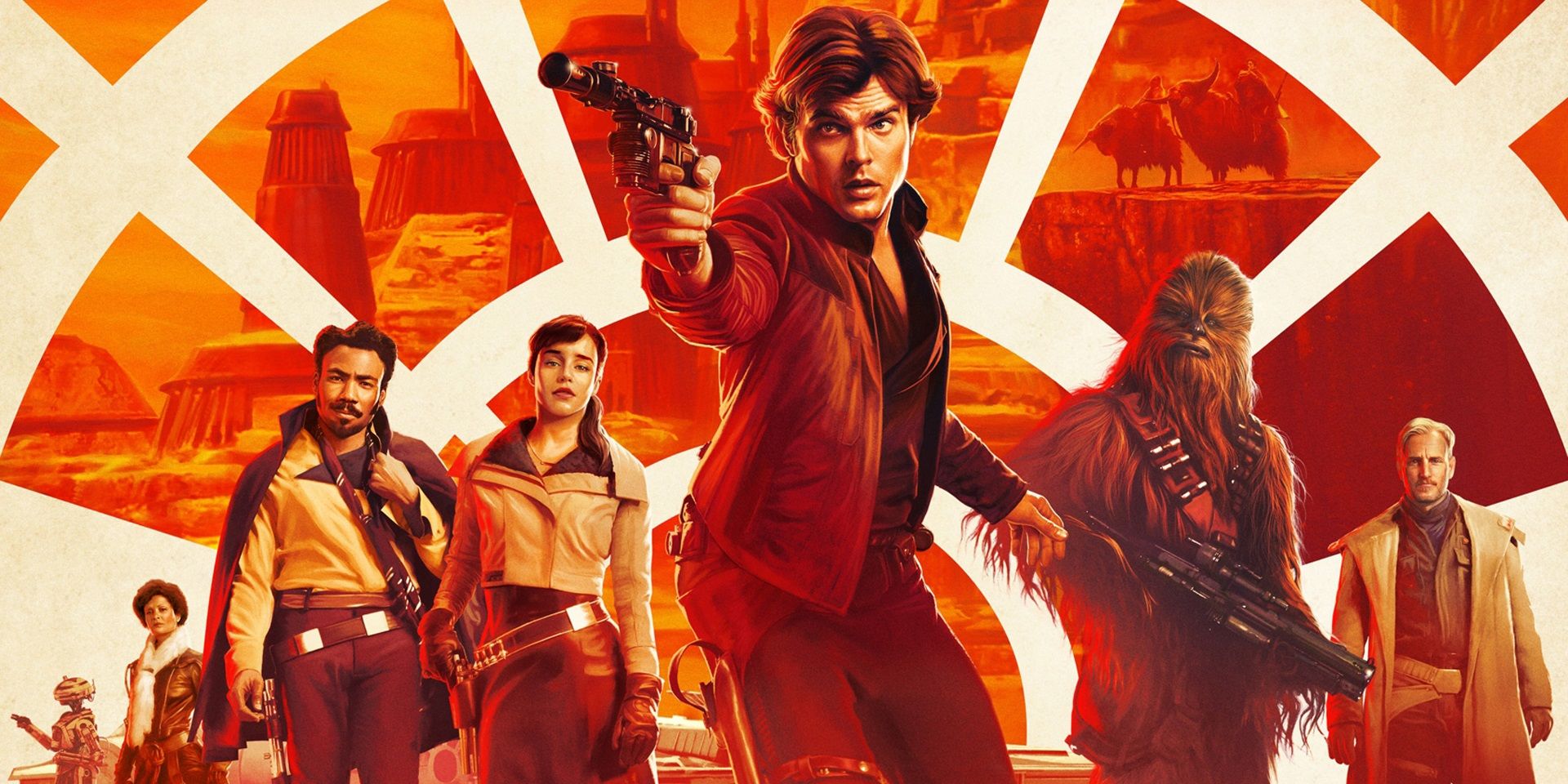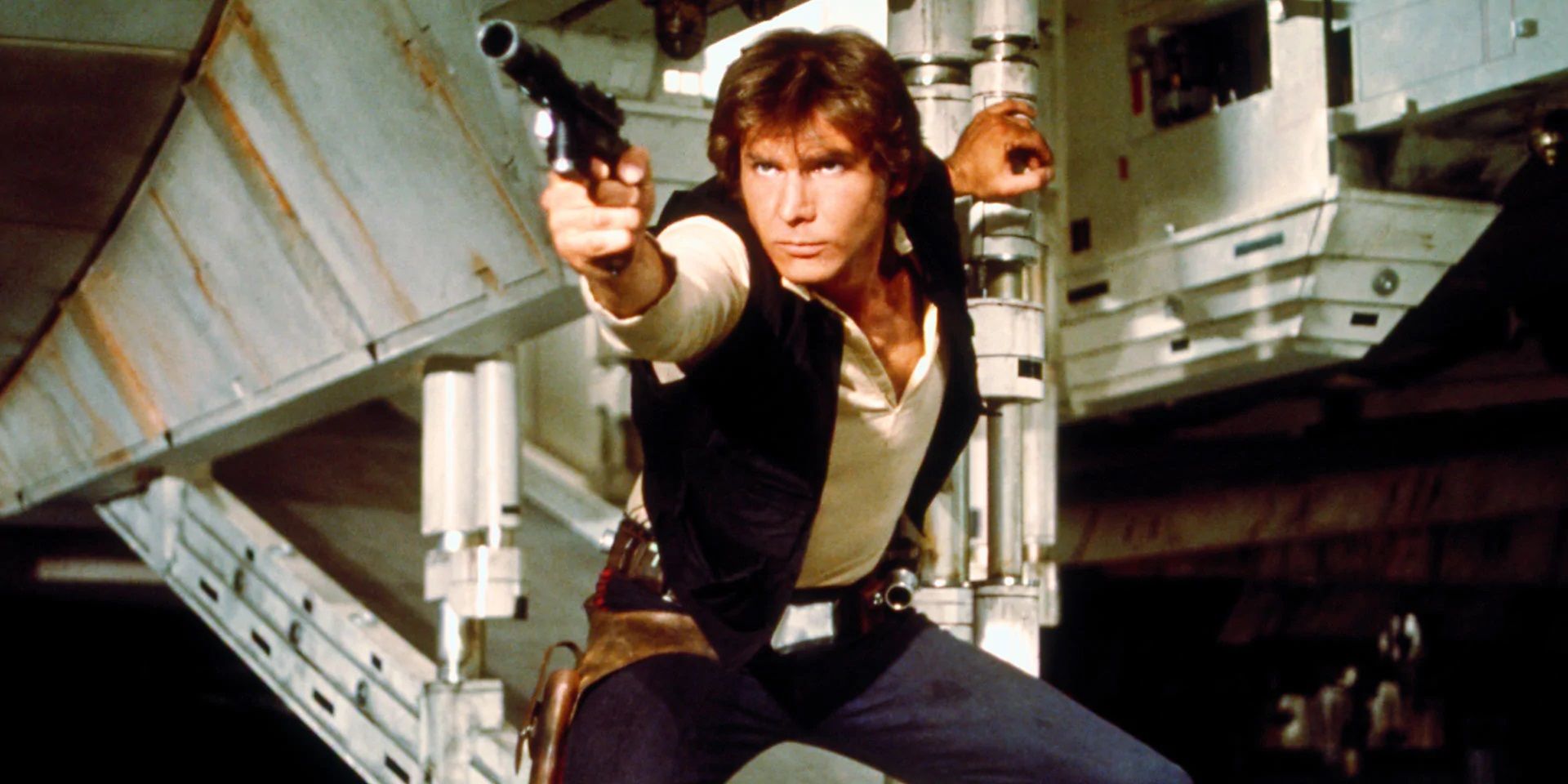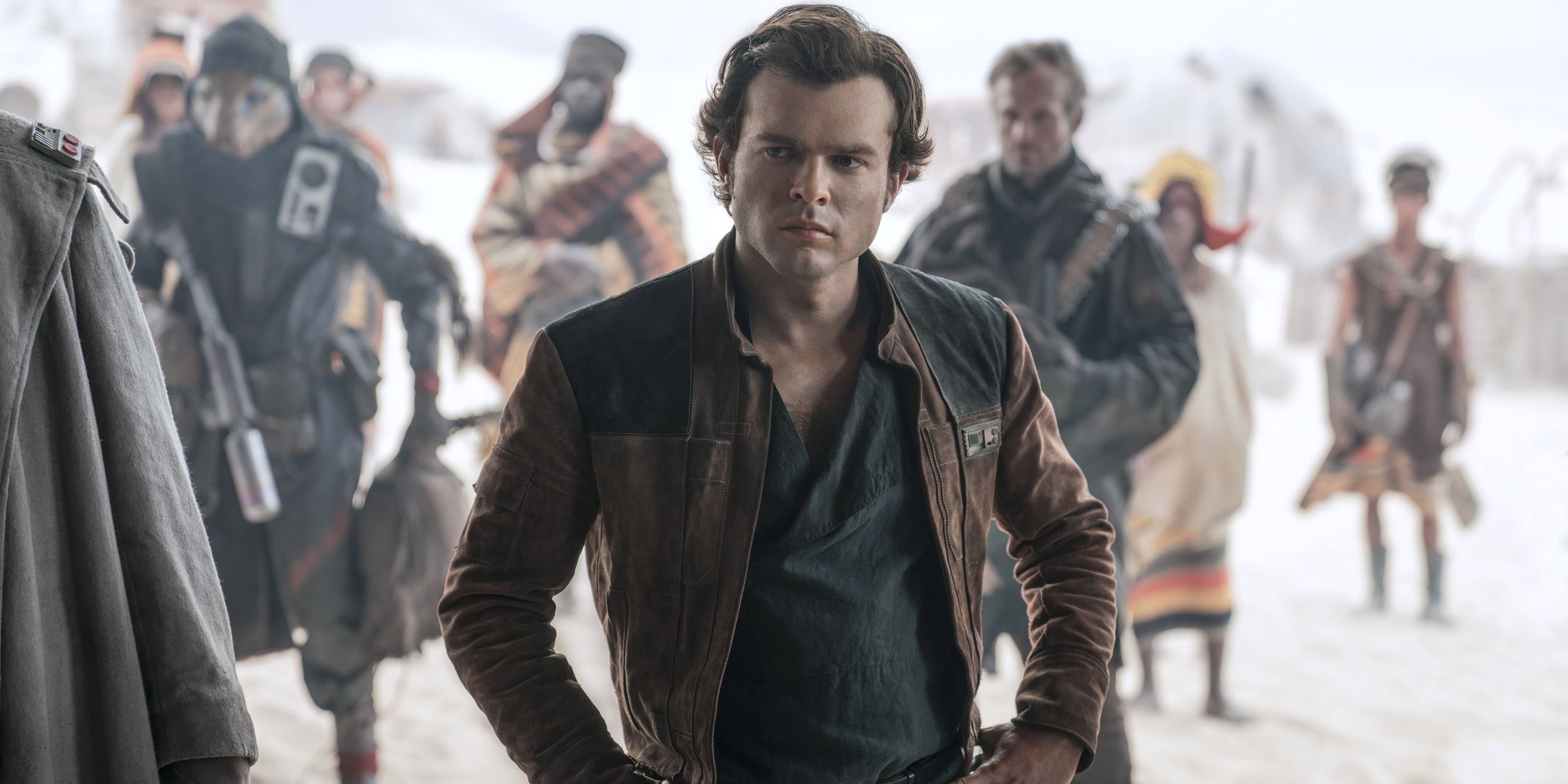
While the moviegoing community was mourning half the Avengers in the wake of Infinity War’s bombshell ending (and forking out cash for a seventh or eighth viewing), Solo: A Star Wars Story – the fourth big-screen effort in Disney’s pre-Mandalorian attempts to spearhead a successful post-George Lucas Star Wars franchise – came and went without attracting much attention or praise. Solo is a fine movie with some interesting set pieces and enough escapist spectacle to warrant another trip to a galaxy far, far away, but it ultimately fails to justify its existence. If it wasn’t a Han Solo origin movie, it would be an agreeable blockbuster with a likable, roguish lead. Being Han’s origin story is its downfall, because this stuck-up, half-witted, scruffy-looking nerf herder didn’t need an origin story.
Sadly, the most notable thing about Solo: A Star Wars Story is that it was the first major tentpole release in the Star Wars franchise to bomb at the box office. Due to the many reshoots imposed by Disney, Solo ballooned into one of the most expensive movies ever made with a $300 million budget and an estimated $500 million break-even point. At the end of its theatrical run, Solo was more than $100 million away from that break-even point. This box office failure has been attributed to a number of factors, namely “Star Wars fatigue” since it arrived just five months after the historically polarizing The Last Jedi. Plus, it didn’t help that Disney didn’t start the marketing campaign until just three months before the release, meaning a lot of casual moviegoers didn’t even know there was a Han Solo origin movie playing in theaters when there was a Han Solo origin movie playing in theaters.
RELATED: Star Wars: Have You Heard The Tragedy Of Solo: A Star Wars Story?
Ultimately, Solo failed because it didn’t need to exist. The majority of moviegoers who were aware of Solo’s release had an active interest in Star Wars, and no Star Wars fans were clamoring for Han’s backstory, because the Han Solo character works much better without an origin story. There’s nothing wrong with a little mystery; it makes for stronger stories.

Han’s introduction in the shadiest corner booth of Mos Eisley Cantina in the original 1977 Star Wars movie already tells us everything we need to know about the character. He’s an intergalactic pirate and smuggler who’s only interested in money; his best friend (and, seemingly, only acquaintance in the galaxy) is a Wookiee named Chewbacca; and he’s the captain of the Millennium Falcon, the ship that made the Kessel Run in less than twelve parsecs. He’s worked with a bunch of gangsters, only ever looking out for himself, and he’s rubbed some of them the wrong way and owes money to one in particular, who happens to be the most notorious crime boss on Tatooine. That’s all the backstory that viewers need to know to understand who Han is and follow his arc up to Return of the Jedi’s triumphant finale.
We don’t need to know how he met Chewie or the circumstances under which he acquired the Falcon. After 40 years of ravenous fandom, all those answers were bound to disappoint anyway. None of it is necessary to Han’s actual story, which is his transformation from being a self-centered renegade with no stake in the Galactic Civil War into one of the heroes of the Rebellion surrounded by friends he cares about. We definitely didn’t need to know that the Kessel Run has a couple of dangerous shortcuts, so Han’s parsec line is actually accurate to it being a unit of distance. That’s the second climactic action sequence in a Star Wars blockbuster that Disney has dedicated to clearing up a little inconsistency from a throwaway line in the original movie (after Rogue One’s explanation of how the air shaft on the top of the Death Star was intentionally sabotaged by the architect).
It would be fun to visit the parallel universe in which Phil Lord and Christopher Miller got to direct Solo as they intended (and Colin Trevorrow got to direct Episode IX as he intended) to see how these movies would’ve worked out without studio interference. Lord and Miller were fired from Solo in the middle of filming as Lucasfilm got cold feet about their Guardians of the Galaxy-esque comedic tone, but they were the only reason a lot of fans had hope for Solo. They made both 21 Jump Street and The Lego Movie, two movies nobody thought they needed that turned out to be huge hits because Lord and Miller took an outside-the-box approach. They could’ve knocked Solo out of the park.
Lord and Miller were replaced by Ron Howard, who completed it more in line with what Lucasfilm was looking for: a safe bet (seemingly). But since shooting was already underway on a completely different version of the movie, this led to major tonal inconsistencies. The final product is oddly miserable for a Star Wars movie, with somber characters and drab color-grading. Howard dialed down the colors on the footage that was shot when the movie was supposed to be a comedy, but the scenes weren’t lit for that palette, so it’s sometimes difficult to even make out what’s happening in all the gloominess.

This movie wasn’t doomed to fail. Even if there’s no replacing Harrison Ford as Han Solo (another big issue this movie faced), Alden Ehrenreich did a great job of playing Han without imitating Ford. There was a way to make a Han Solo movie work with a visionary director focusing on what works about the character. But Solo feels painfully generic when it should’ve been utterly unique. This movie had the potential to lean into the Weird West aesthetic of Tatooine with a roguish gunslinger protagonist. Young Han Solo is the perfect antihero for a space western. Solo was touted as a space western in its marketing, but aside from the train robbery sequence and the climactic gunfight, it doesn’t feel much like a western; it’s just a bland studio tentpole designed by committee to please everyone.
If Han’s origins had actually strengthened his character in the way that Anakin’s tragic downfall in the prequels retroactively strengthened Vader’s scenes, then it would be a different story. But Solo is a disappointment as Han’s origin story, because it’s more of an origin story for his stuff – his jacket, his dice, his ship, his last name – than his actual character. The beats of a hero’s journey are stuffed into Han’s arc in Solo, but he’s about to meet Luke Skywalker and Ben Kenobi and go on the most eye-opening adventure of his life, so all those beats are coming later anyway.
The original trilogy already acted as a hero’s journey arc for Han, so cramming one in just before he headed to Tatooine to work with Jabba feels disingenuous. He has the same revelations about his selfishness and the need to fight for a worthy cause in Solo that he’ll have a few weeks later when he returns to help Luke blow up the Death Star.

